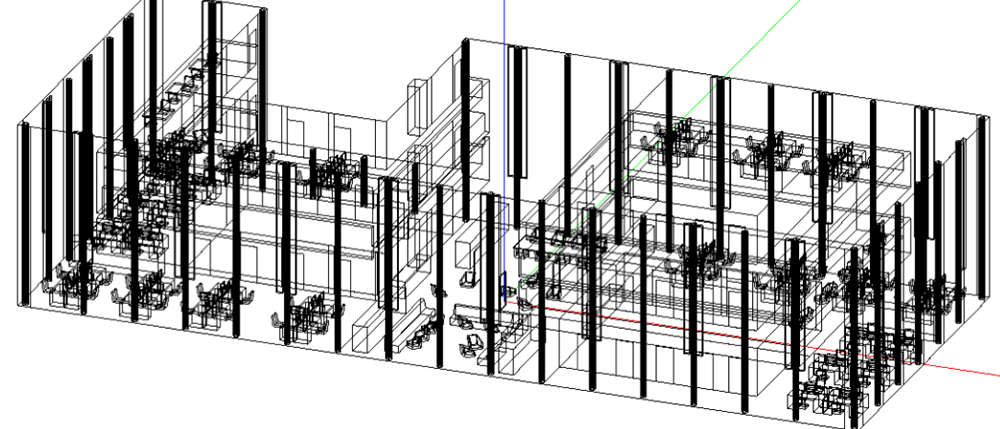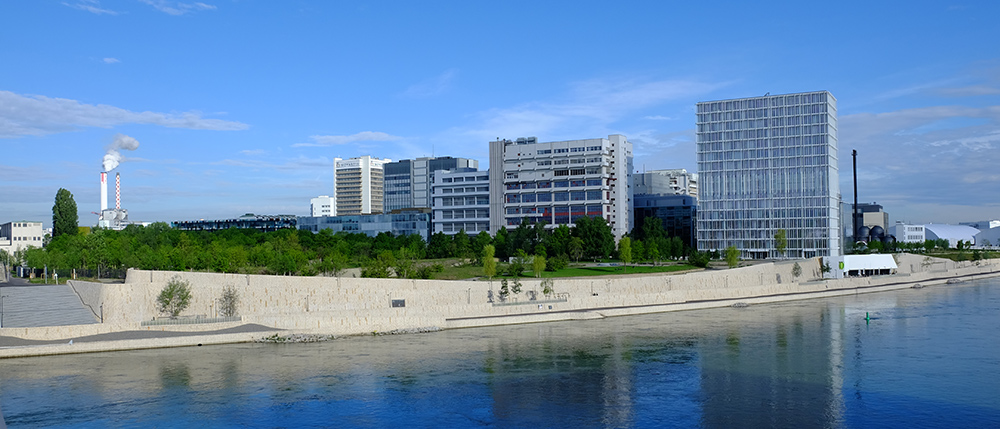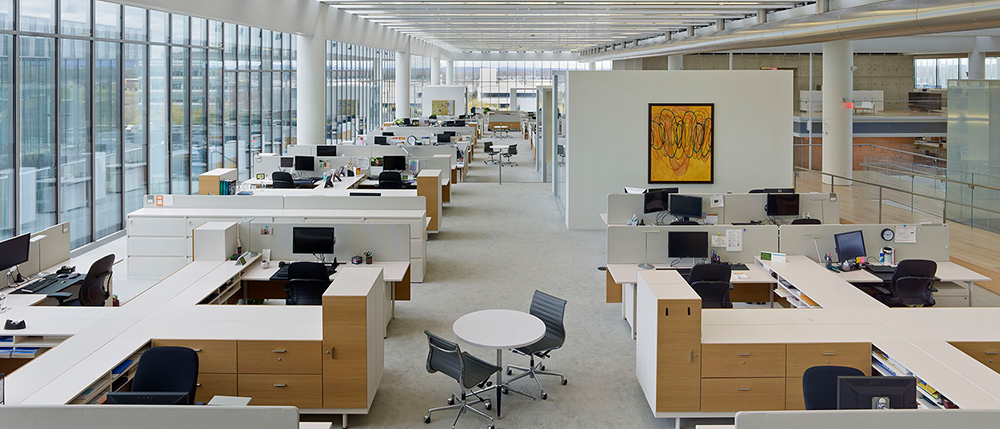The Sound of Silence
Intelligent Sound Masking
Sound masking (or auditory masking) causes certain frequency bands within the spectrum of a sound to be partly or fully hidden from human perception. In simple terms, sound masking hides disruptive noises (such as conversations) in an unobtrusive basic noise.
In most cases, this is done with the use of purely technically generated static noise which monophonically trickles down from the ceilings of open space offices. It comes as no surprise that such system rarely find acceptance among the employees…
However, sound masking can also be done differently, and not only for open space offices, but for any architectural space whose silence can become uncomfortably loud. In summary, the following aspects are relevant for successfully implemented sound masking:
- A pleasant masking sound with sonic content that is coherent with the space's materiality, architecture and surrounding,
so that it does not appear alien - Spacial orchestration of the masking sound, meaning that the various elements of the sound scape come from different speakers
and directions (ceiling, walls, floor, possibly objects) - Custom-made content and volumes for the different areas with their individual requirements;
fluid transitions between the areas - Sufficient programming options to allow variation; e.g. incorporating weather, season etc.
- Including employees in the process; careful communication as well as an acclimation phase;
the psychological aspect is crucial for the acceptance and therefore the success of the project
- Study: Novartis Pharma Campus Basel
For a building of the Novartis Campus, Idee und Klang (in collaboration with Applied Acoustics) evaluated a site-specific sound masking system, which meets both functional and aesthetic requirements.
- Application example 1: ‚Product Info Center‘ at BMW Welt
For a new area of the BMW Welt in Munich, Idee und Klang developed a sound concept with sound masking as a core element. With up to 13 meetings at once, an essential task was to ensure acoustic intimacy. Link to Project
- Application example 2: ‚First World War Galleries‘ of IWM London
For the sound concept of the London Imperial War Museum’s new gallery, different thematic areas of the open gallery needed to be designed in a way that avoided disruptive sound leakage. Here as well, an innovative sound masking concept was applied to give sonic coherence to the exhibition. To the Project
Press
Article in Professional System (German only)



